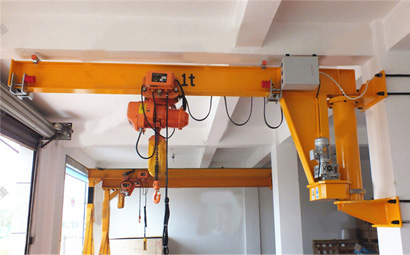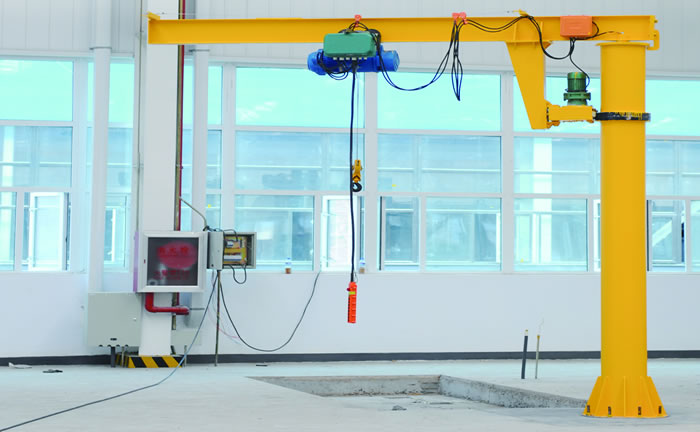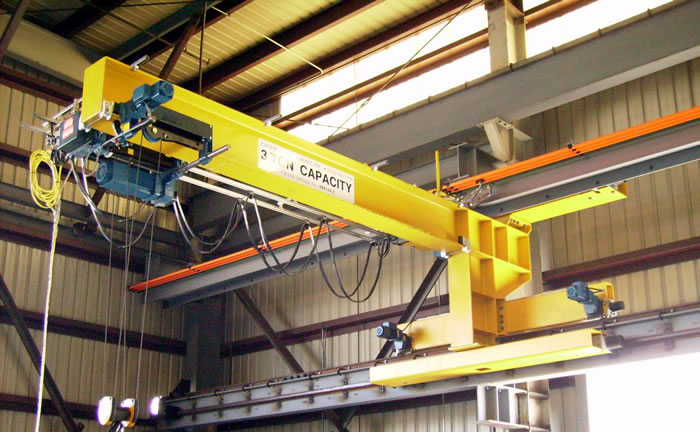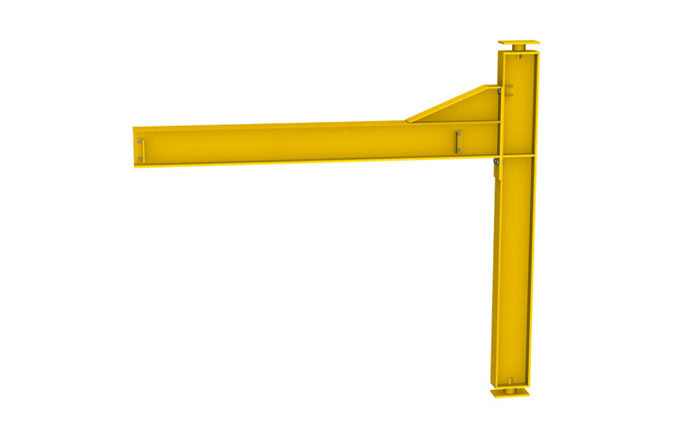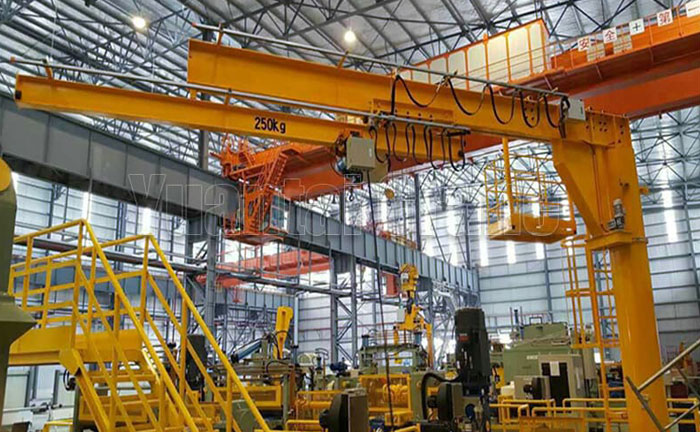How to Choose the Right 5 Ton Jib Crane for Your Business:
- Load Capacity: Make sure the rated load capacity of the crane meets your needs. Although it is 5 tons, you should consider the safety factor in actual use.
- Working Environment: Consider the environment in which the crane will be used (indoor or outdoor) and whether it needs to be corrosion proof or waterproof.
- Lifting height: Determine the required lifting height to ensure that the crane can meet your operational needs.
- Span: The length of the cantilever affects the operating range of the crane, choose a span that is suitable for your workspace.
- Power Type: Choose the right type of power (e.g. electric, pneumatic, etc.) for your facility.
- Mobility: If you need to work in different locations, consider choosing a crane with mobility features.
- Control Method: Determine whether to use manual or electric control, and choose the control method that suits your operating habits.
- Manufacturer and brand: choose a reputable manufacturer to ensure product quality and after-sales service.
- Budget: Choose the right model according to your budget, and also consider the long-term maintenance cost.
Application of 5 ton jib crane:
5 tons jib cranes are widely used in many industries, here are some of the main application areas:
- Manufacturing industry: Used to move heavy objects in the production line to improve production efficiency.
- Warehousing and Logistics: For moving and stacking goods in warehouses for easy management and access.
- Construction: Used at construction sites to lift building materials and equipment to ensure safe and efficient operations.
- Repair and maintenance: Helps lift and move heavy equipment or parts in automotive and machinery repair shops.
- Ships and Ports: Used for loading and unloading of goods on ships to improve efficiency and reduce manpower requirements.
- Laboratories and Research Institutions: Move heavy equipment or materials in laboratories to ensure safety and convenience.
- Power and Energy Industry: Move heavy equipment and components in power plants and energy facilities.
- Aerospace: Used in the assembly and repair of aircraft components to ensure accuracy and safety.
- Metal Processing: Moves and handles heavy metal materials and finished products in metal processing plants.
Comparing Electric vs. Manual 5 Ton Jib Cranes:
When comparing electric and manual 5 ton jib cranes, there are several key factors to consider, each with its advantages and disadvantages. Here’s a breakdown to help you decide which might be best for your needs:
1. Operation
Electric Jib Cranes:
Ease of Use: Requires less physical effort, making it suitable for frequent lifting.
Speed: Typically faster and can handle larger loads efficiently.
Control: Often equipped with remote control for added convenience.
Manual Jib Cranes:
Physical Effort: Requires manual labor, which may be tiring for heavy or repetitive tasks.
Speed: Slower, as operators must do the lifting and lowering manually.
2. Power Source
Electric:
Requires a power supply, which might limit placement depending on electrical infrastructure.
Typically more expensive upfront due to the electrical components.
Manual:
No power source needed, making it versatile for various locations.
Generally more affordable and simpler in design.
3. Maintenance
Electric:
May require more maintenance due to electrical components and motors.
Potential for higher repair costs if electrical systems fail.
Manual:
Simpler mechanics mean less frequent maintenance and lower costs.
Less likely to have mechanical failures compared to electric models.
4. Load Capacity and Performance
Both types can handle 5 tons, but performance may vary based on the design and brand.
Electric cranes often provide smoother operation and more consistent lifting capabilities, especially for continuous use.
Manual cranes may struggle with very heavy or awkward loads, requiring more physical strength.
5. Cost Considerations
Electric Jib Cranes:
Higher initial cost due to motor and electrical components.
Possible higher long-term costs due to energy consumption and maintenance.
Manual Jib Cranes:
Generally lower initial purchase price.
Less expensive to maintain and operate, but may require more labor.
6. Safety Features
Electric:
Often come with advanced safety features, such as overload protection and emergency stop buttons.
Reduced risk of accidents due to improved control.
Manual:
Safety largely depends on the operator's skill and awareness.
Simpler design may have fewer safety features, but generally lower risk of electrical accidents.
7. Use Case Scenarios
Electric Cranes: Ideal for environments where heavy loads are frequently moved, such as warehouses, manufacturing, and assembly lines.
Manual Cranes: Suitable for smaller shops, construction sites, or applications where loads are less frequently handled or where space for power supply is limited.
Choosing between electric and manual jib cranes largely depends on your specific operational needs, budget, and the frequency of use. If you require efficiency and speed for regular heavy lifting, an electric crane may be the best choice. For less frequent use or budget constraints, a manual crane could be more suitable.
Cost Analysis: Investing in a 5 Ton Jib Crane for Your Operations:
1. Initial Purchase Cost
Crane Cost: Assess the price of the crane itself, including any optional features.
Installation Expenses: Factor in costs for installation, including any structural modifications required.
2. Operating Costs
Energy Consumption: For electric cranes, estimate the electricity costs based on usage.
Maintenance: Include routine maintenance expenses and potential repairs over time.
Labor Costs: Evaluate any changes in labor costs due to increased efficiency or the need for specialized operators.
3. Productivity Gains
Increased Efficiency: Estimate the potential increase in productivity from faster lifting operations.
Reduced Downtime: Consider how the crane might decrease downtime related to manual lifting or other equipment.
4. Long-Term Benefits
Enhanced Flexibility: A jib crane allows for versatile operation, potentially opening new business opportunities.
Return on Investment: Calculate the expected ROI based on productivity gains, reduced labor costs, and safety improvements.
Conducting a comprehensive cost analysis involves evaluating both immediate expenses and long-term benefits. By factoring in all these elements, you can make an informed decision about investing in a 5-ton jib crane for your operations, ultimately ensuring that it aligns with your financial and operational goals.
